

Exposure Scenarios
A worker exposure scenario and two recreational exposure scenarios were identified. A residential scenario was not evaluated because there are no residences located near the site
The worker ingestion and dermal scenario assumes that the worker is on site for cleanup purposes. The cleanup time is estimated to be 3 years, working eight hours per day, five days a week, 50 weeks per year. The ingestion contact rate (amount of soil ingested per day) for adults is 100 mg/day. The average adult body weight is 70 kilograms. Averaging times for non-carcinogenic intakes equal the exposure period (3 years); averaging times for carcinogenic intakes are always 70 years.
Table 2. Worker Exposure Scenario - Dermal
Table 1. Worker Exposure Scenario - Ingestion

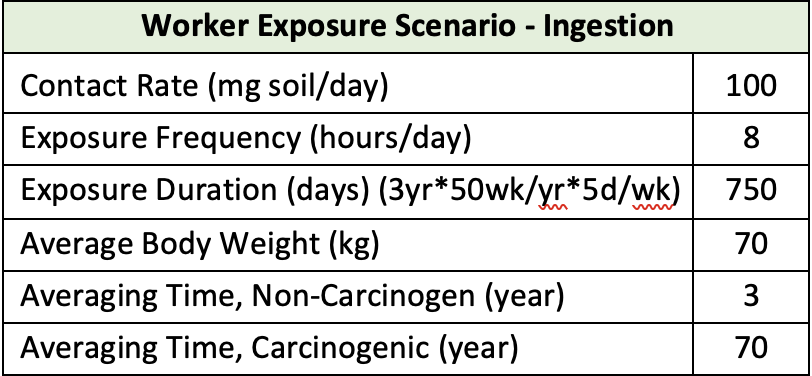
The recreational camping scenario considered exposure to both adults and children. Children are categorized into ages 0 to 6 years and 6 to 12 years. The ingestion contact rate for children aged 0 to 6 years old is 200 mg of soil ingested per day.For children aged 6 to 12 and adults, the contact rate is 100 mg per day .
Table 3. Recreational Camping Exposure Scenario - Ingestion
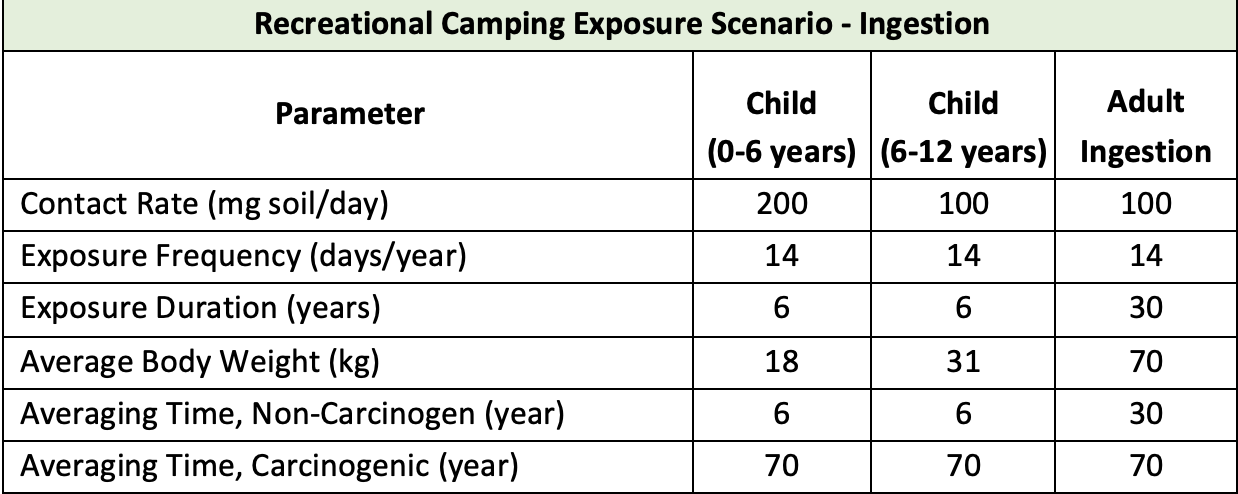
Table 4. Recreational Camping Exposure Scenario - Dermal
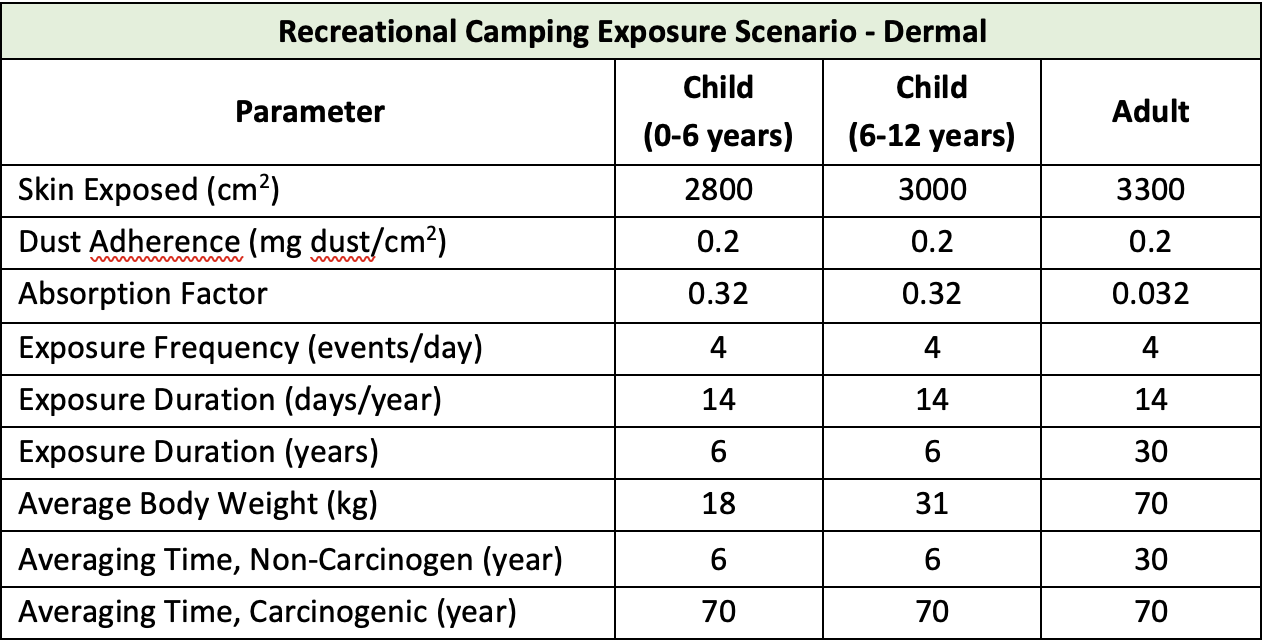
For frequent visitors of the area and locals, an exposure duration of 20 days per year at two hours per visit for a total of 40 hrs/year was assumed per the EPA Addendum to the baseline human health risk assessment corresponding to four 2-day weekend trips or two 1-week visits per year. Exposure will likely occur in the washes, hotspots, DU-3, and DU-4 but not in any one location for 2 hours.
Table 5. Recreational ATV Exposure Scenario - Ingestion
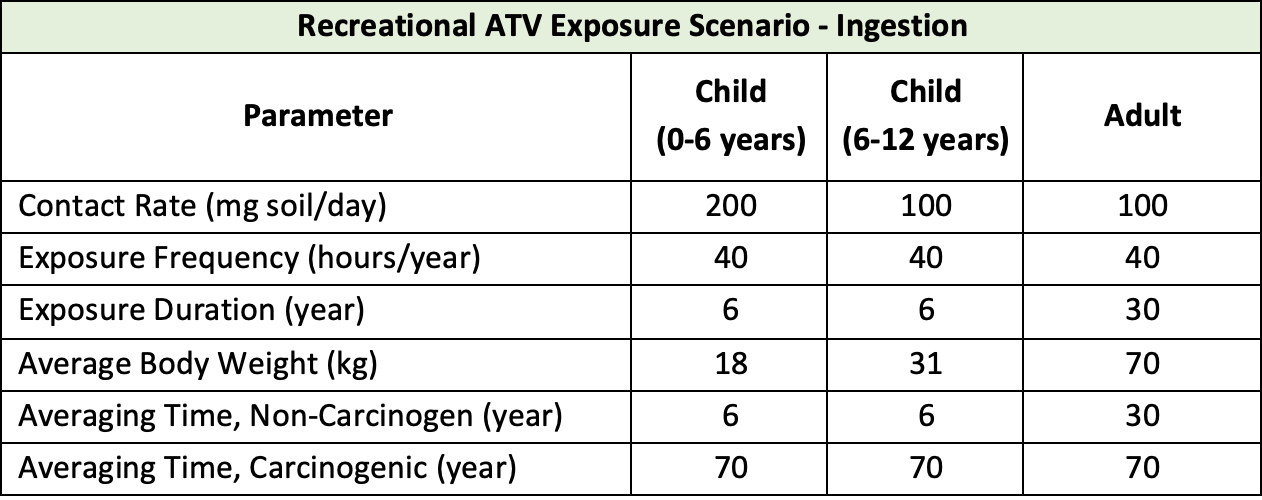
Table 6. Recreational ATV Exposure Scenario - Dermal

The following equations are used for calculating Intake and Risk
Equation 1. Intake Dose
Equation 2. Arsenic Daily Intake Doses

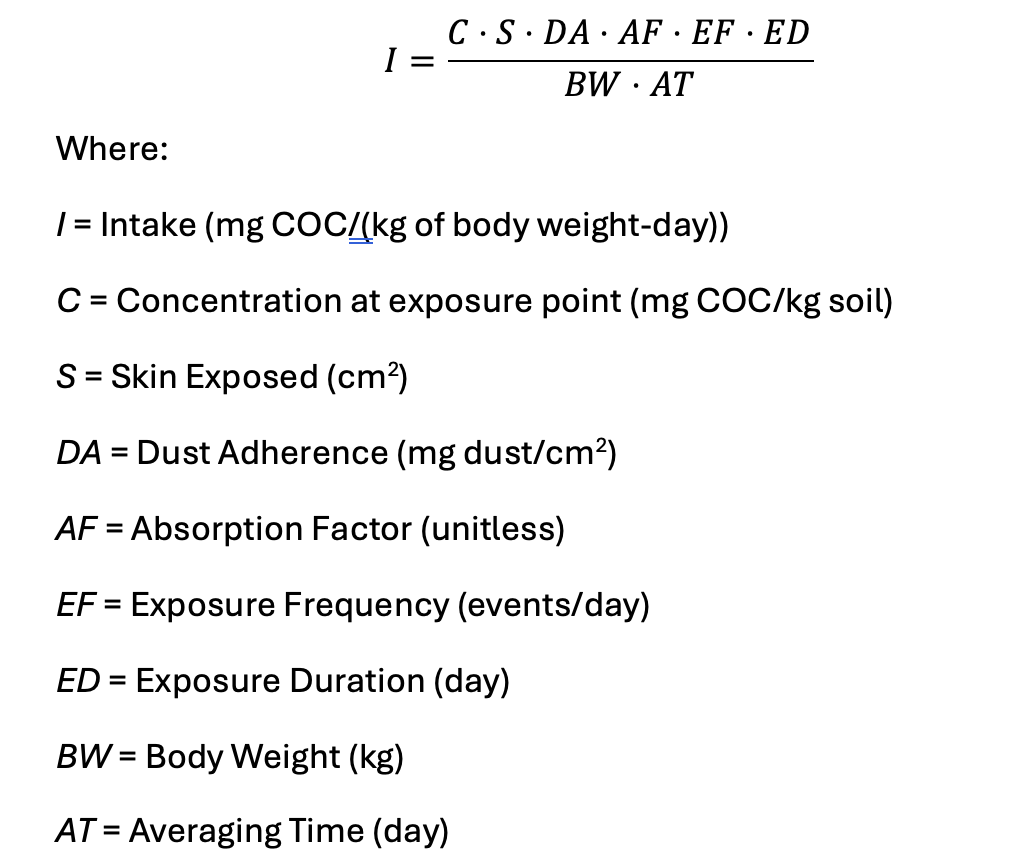
The following tables are the intake does of differen DUs and scenarios
Table 7. Worker scenario arsenic ingestion intake doses

Table 8. Worker arsenic dermal intake doses

Table 9. Recreational camping arsenic ingestion intake doses
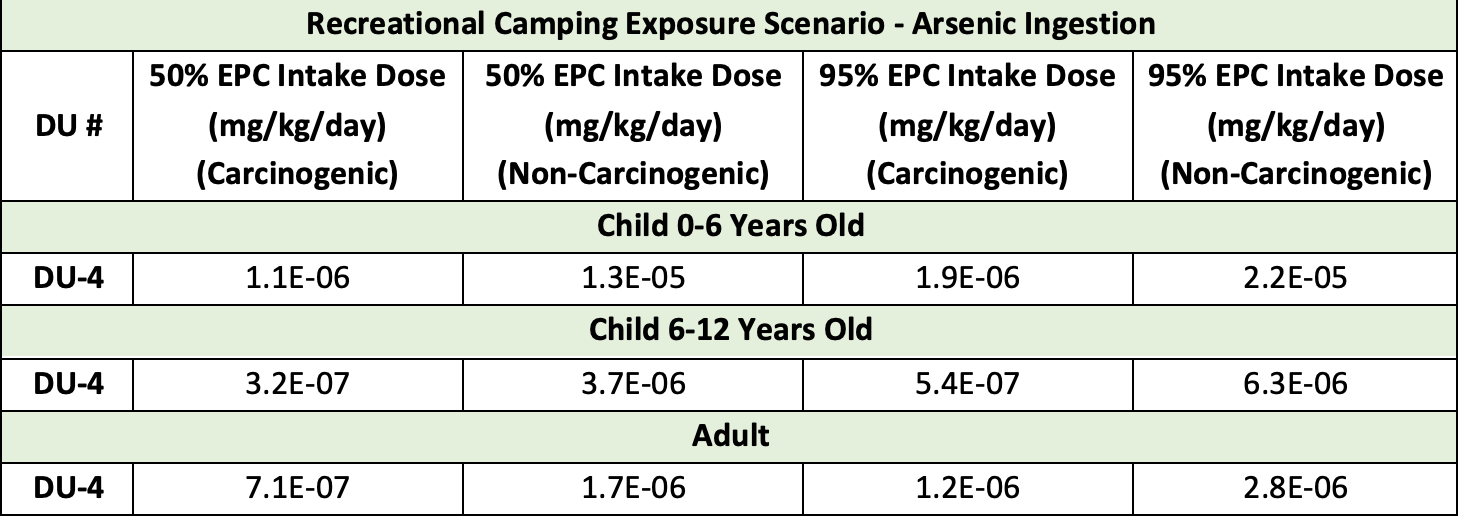
Table 10. Recreational camping arsenic dermal exposure scenario
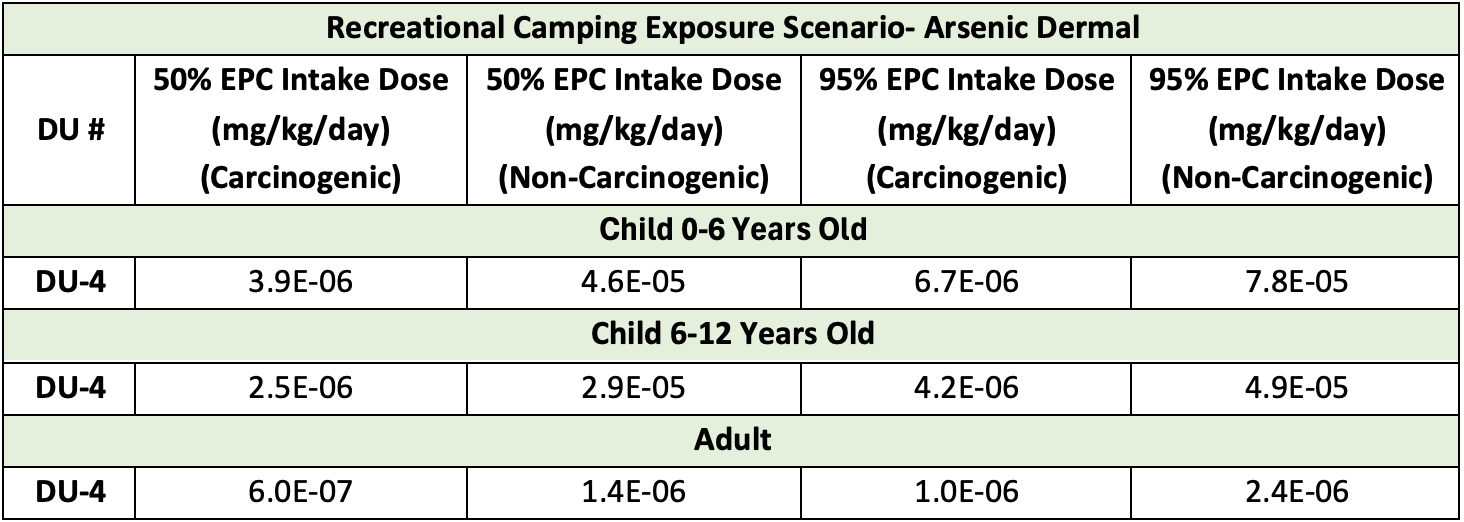
Table 11. Recreational ATV arsenic ingestion exposure scenario
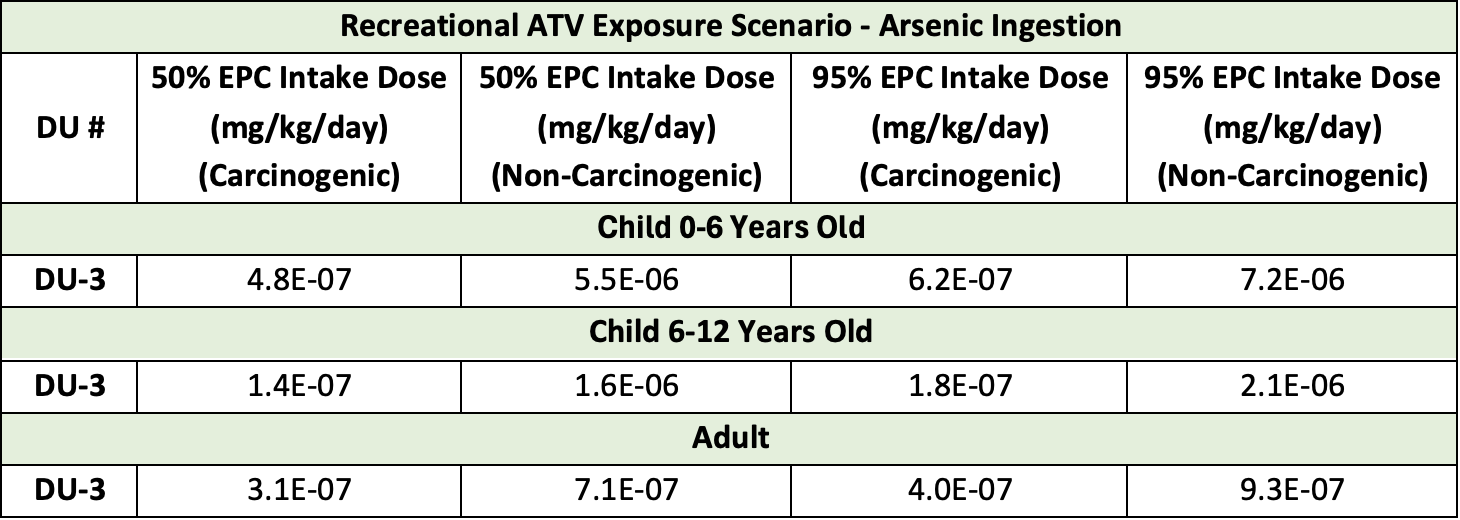
Table 12. Recreational ATV arsenic dermal exposure scenario

Computation of Risk
The data presented in the exposure and toxicity assessments, are used to compute the risk that is present to recreational users and on-site workers. The following equations display the calculation used to determine carcinogenic risk for each exposure scenario, and non-carcinogenic risk of arsenic for each exposure scenario.
Equation 3. Carcinogenic Risk

Equation 4. Non- carcinogenic Risk
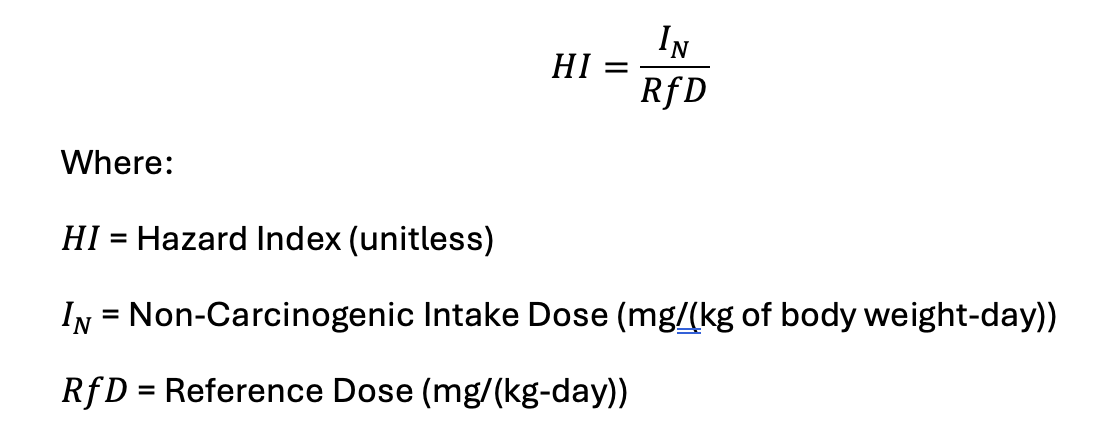
Tables below present the carcinogenic risk and hazard indices for each ingestion and dermal exposure scenario for the median exposed person (50% EPC intake) and the maximally exposed person (95% EPC intake). For carcinogenic risk to be considered elevated, it must be greater than 10-6 (i.e., “one in a million” chance of developing cancer). For non-carcinogenic risk to be considered elevated, the hazard index must be greater than one. The elevated scenarios are highlighted in red in the following tables.
Table 13. Arsenic ingestion carcinogenic risk and Hazard Indices
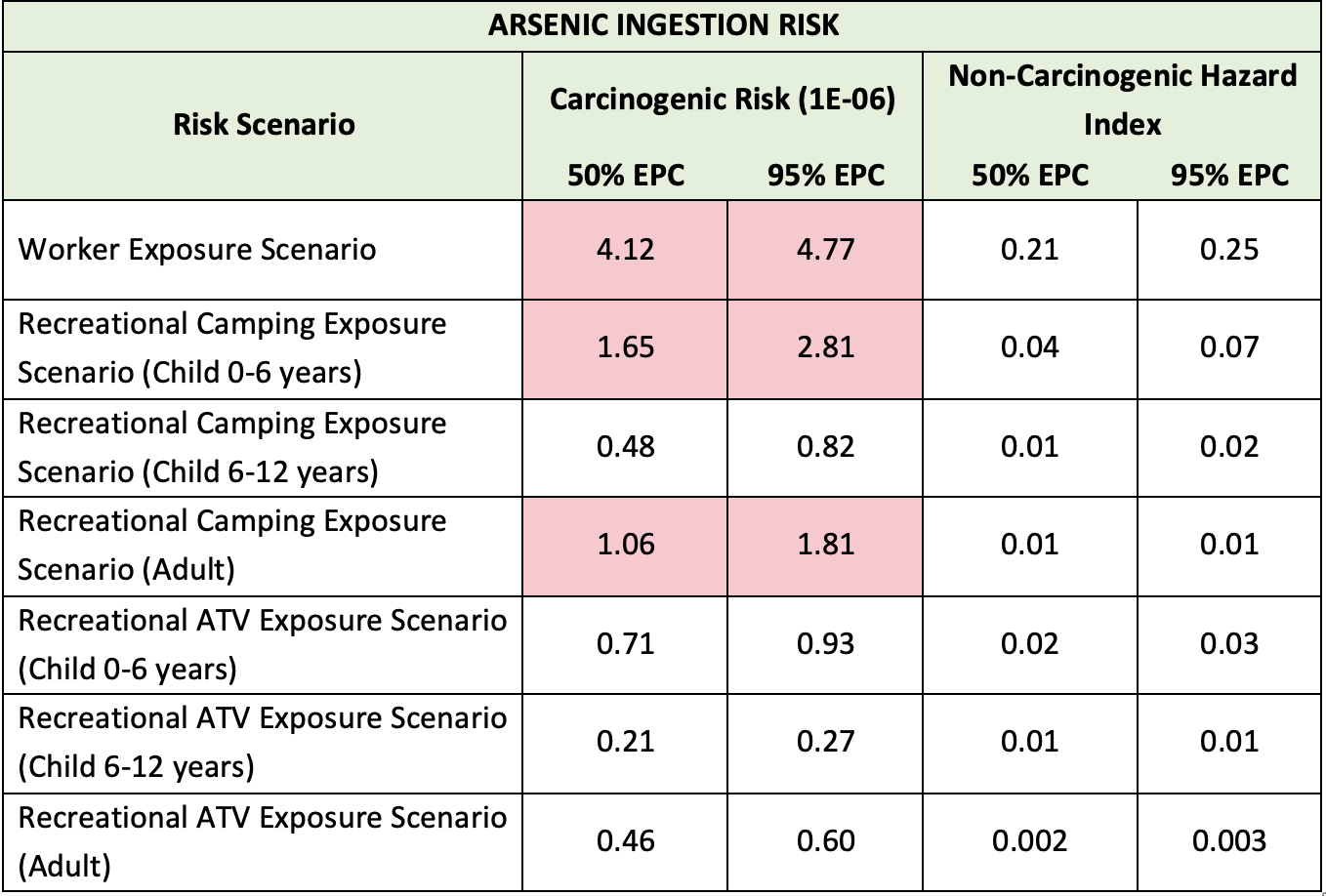
Table 14. Carcinogenic Risk and Hazard Indices
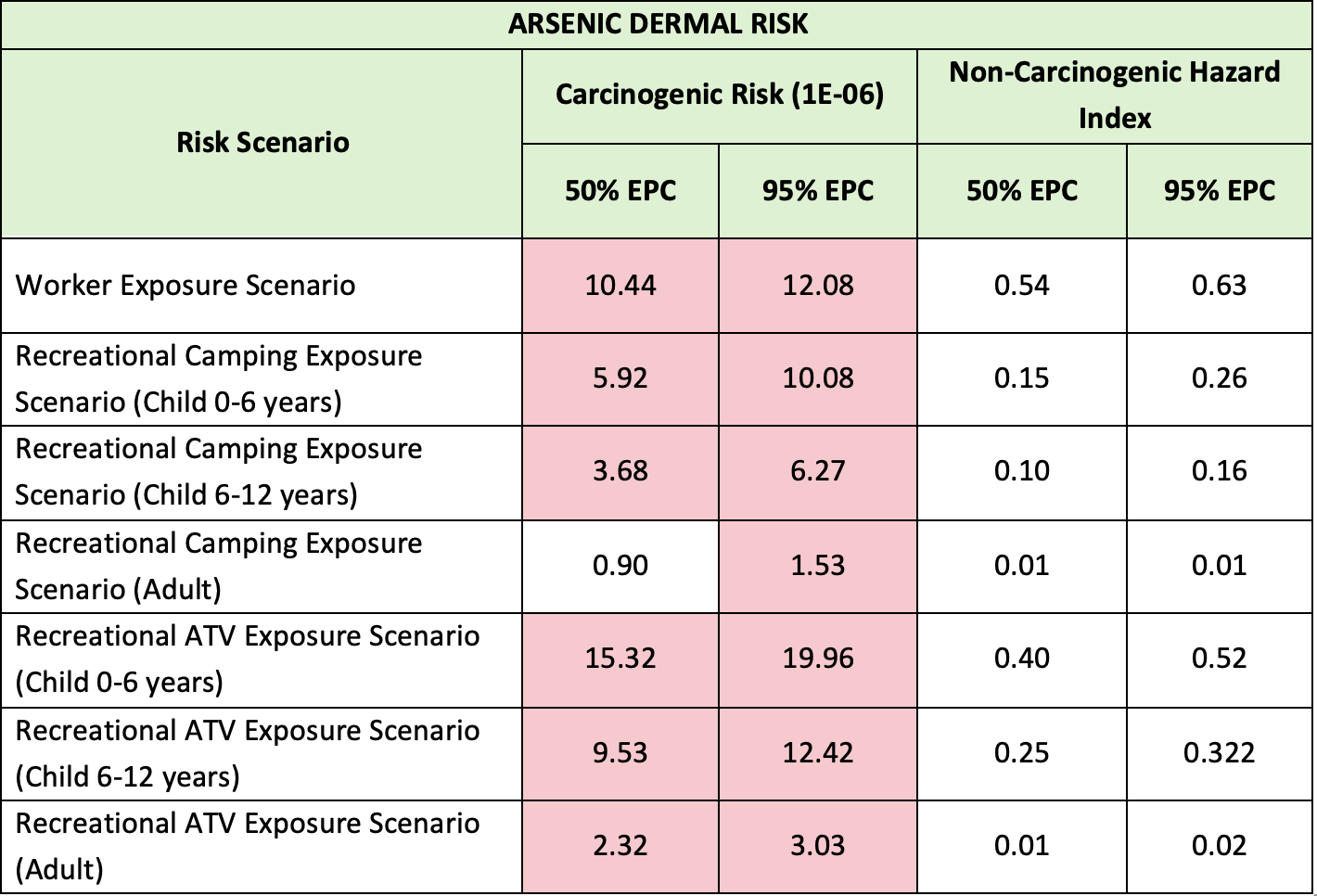
created with
Website Builder .